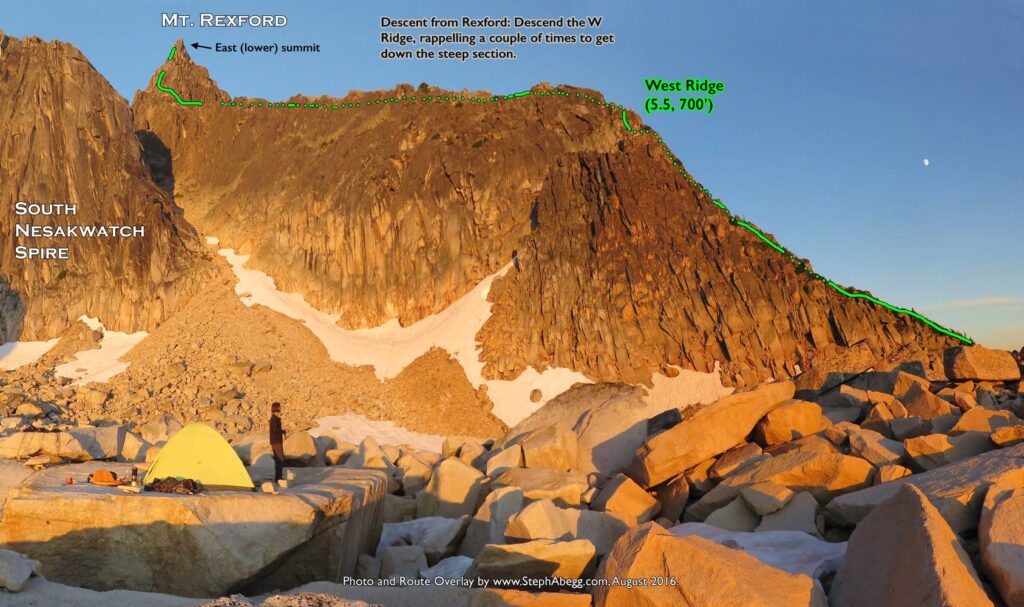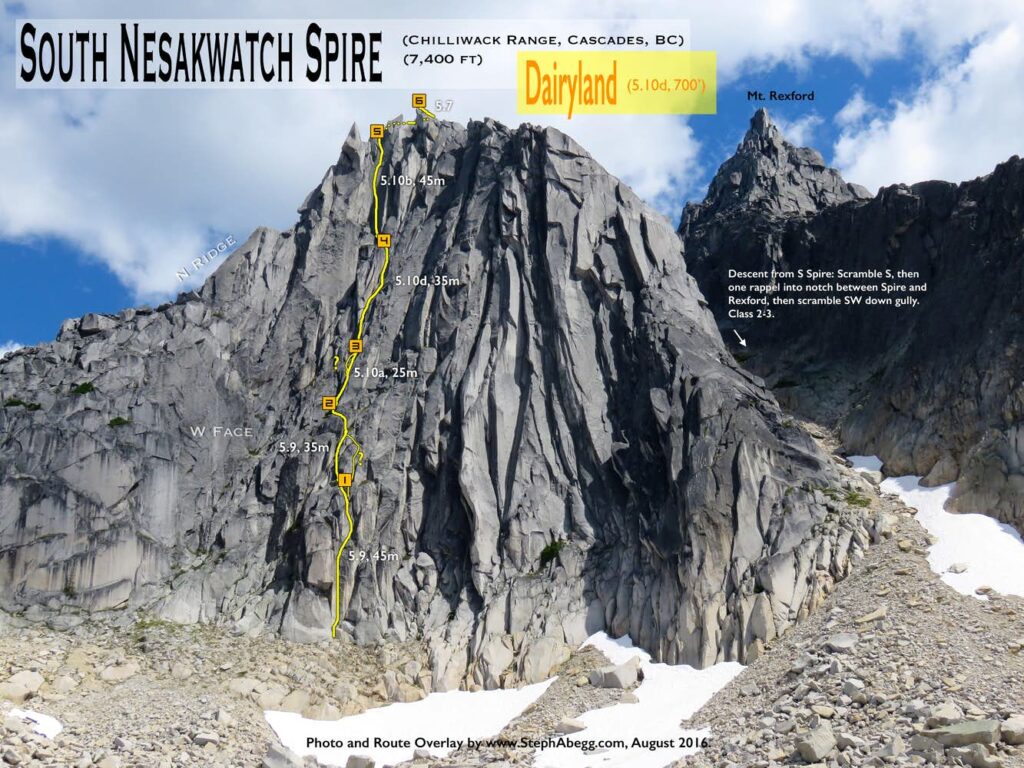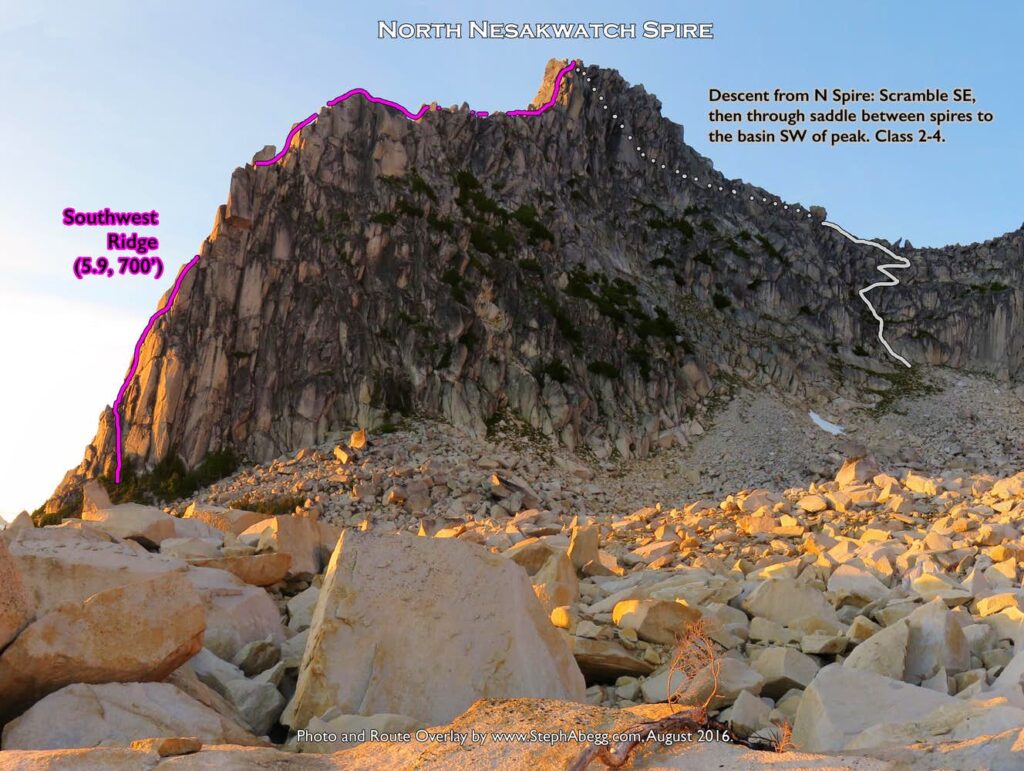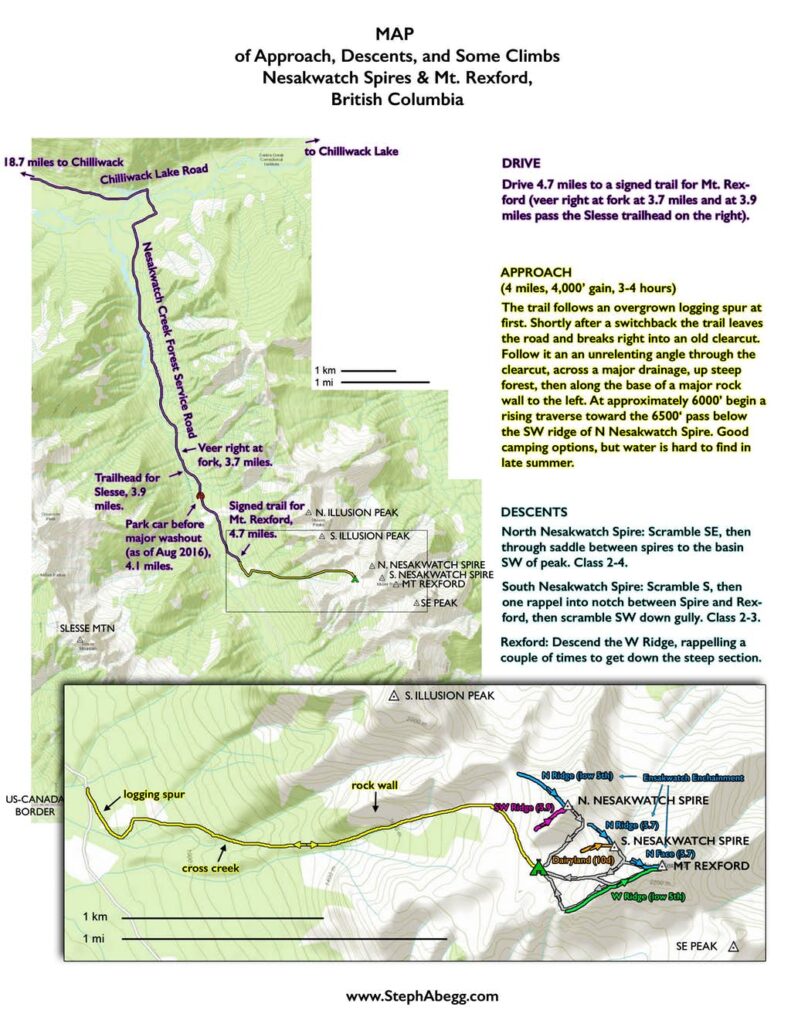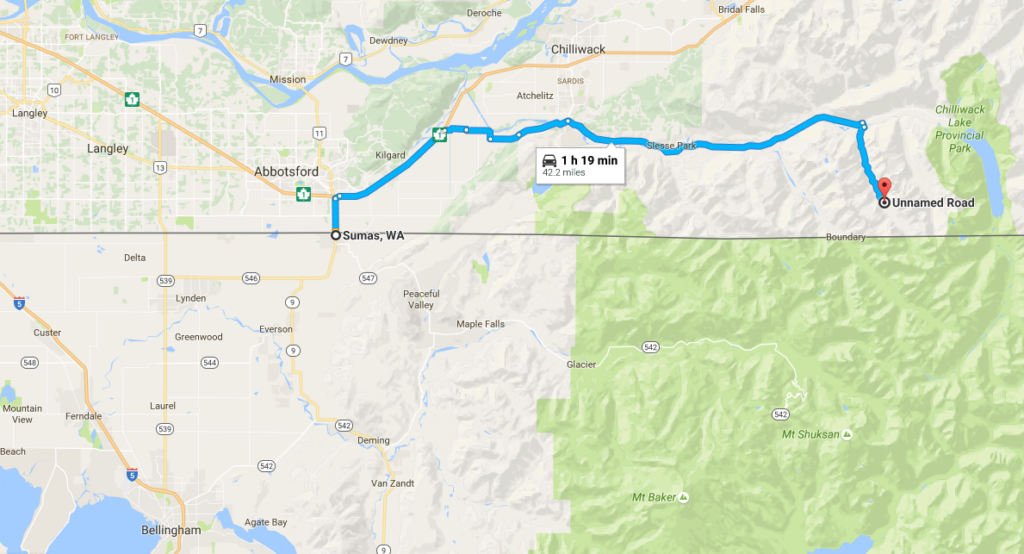Intro
THIS TRIP REPORT IS STILL MOSTLY IN THE EMBEDDED HTML FORMAT OF MY OLD WEBSITE.
MOBILE Tip: Try Landscape mode. It is generally more mobile friendly.
The Nesakwatch Spires, with prominent north and south peaks, sit just north of Mt. Rexford and east of Mt. Slesse and the city of Chilliwack and are composed of excellent blocky white granite. Their stone is among the best in the range, hosting a variety of short and mid-length routes, with grades ranging from low-5th to 5.12. Plus, the approach takes half a day and there is awesome camping on flat boulders in the upper basin, making it a perfect spot to spend 2-3 days climbing right outside your tent door.
Will and I spent 3 days (2 nights) in the area. We climbed three routes. The first day we hiked in and then climbed the popular West Ridge (5.5) of Rexford, which took just a few hours and got us back to camp in time to eat dinner with my mom, who had hiked up that day to spend the night at camp before hiking out the next day. The second day we climbed Dairyland (5.10d) on the steep west wall of South Nesakwatch Spire and then spent a relaxing afternoon making snow-cones and doing nonograms. The third day we climbed the aesthetic Southwest Ridge (5.9) of North Nesakwatch Spire and then packed up and hiked out. Will was back to Seattle by 8pm.
The following page contains photos and route overlays for our three days in the area. Everything just fell into place—awesome partner, bluebird weather, perfect camp, amazing views, great climbs—to make for an awesome trip! Thanks Will for joining me on this adventure.
Some random notes:
• The approach from car to camp took us 3.5 hours with heavy packs. Car to car climbs are definitely possible and might be preferred in later season once the snow (and hence water) is gone from the upper basin.
• Despite the perfect weather on a summer weekend, Will and I had the upper basin entirely to ourselves every night (apart from my mom, who hiked in and joined us Friday night before hiking out Saturday; this was a nice addition to the trip). On both Saturday and Sunday, we saw a few parties each day doing the Ensakwatch Enchainment (this is by far the most common undertaking in the area, a 0.75 mile link-up that climbs over the three summits from north to south, starting via the North Ridge or Southwest Ridge of North Neskawatch, going over the North Ridge of South Nesakwatch, and finishing via the North Face or some variation of Rexford), but most were in there just for the day; we never saw parties on any other routes. Based on the license plates we saw and the people we talked to, this area is relatively popular amongst local Canadians, but seems to have not yet hit the radar of the alpine climbing community south of the border. And the steep wall of solid granite on the west face of South Nesakwatch—although reminiscent in appearance and rock quality to Prusik Peak—seems to get very little traffic at all. Will and I agreed that the area is one of the best-kept secrets of the Cascades. But that is likely to change over the coming years.
• Running water is something to consider on any trip into this area. In mid-August, we found no running water in the basin. The only running water we did spot was close to the start of the hike up and some muddy water running down a dirty slope below Rexford. But we were glad to see a fair bit of snow still lingering in the low spots in the upper basin. Not wanting to deal with the annoyance of melting snow on our Jetboil, we had packed up black garbage bags; with the help of the sunny skies we were able to melt more water than we could possibly drink. Given the size of the snowpatches in the upper basin, I would say that at least some snow will linger until the end of August (2016), but by September (2016) the basin might be completely devoid of snow or water. The last permanent running water is the major stream crossing early on in the trail long before reaching the basin. So if going into the area for an overnight in mid- to late-summer before all the snow has melted from the basin, bring garbage bags and/or extra fuel for melting snow. If going into the area for a day trip or in late summer after the snow has all melted, consider packing water all the way from the car.
• As the previous discussion should indicate, no snow gear was required on our trip (mid-August). Earlier in the season, I could imagine that snow gear would be nice to have for the slope traverses and gullies.
• The best camping spot is a flat-topped boulder in the upper basin. This is within 15 minutes approach to any of the climbs and has an awesome 360° view. There were also snow patches nearby for melting our water. There is also a flat-topped boulder lower on the ridge but this does not have nearly as good of a position or views.
• Our rack for Dairyland on South Nesakwatch: set of stoppers, doubles from tips to #2, single #3, single #4, slings. This was a good rack for the climb and I don't think there is anything we did not use. The only thing I might change is to bring triples in #1 and #2 for the long 10b splitter on Pitch 5, but then that makes for a pretty heavy rack, so the alternative is to run it out a bit (after all it is a handcrack, although mighty steep and strenuous) or to walk cams and possibly even lower to collect a cam or two. A much lighter rack was needed for our other two climbs (single rack from fingers to #4 was plenty sufficient for the Southwest Ridge of North Nesakwatch and I think we only placed one #0.75 and one #1 on the entire West Ridge of Rexford).


